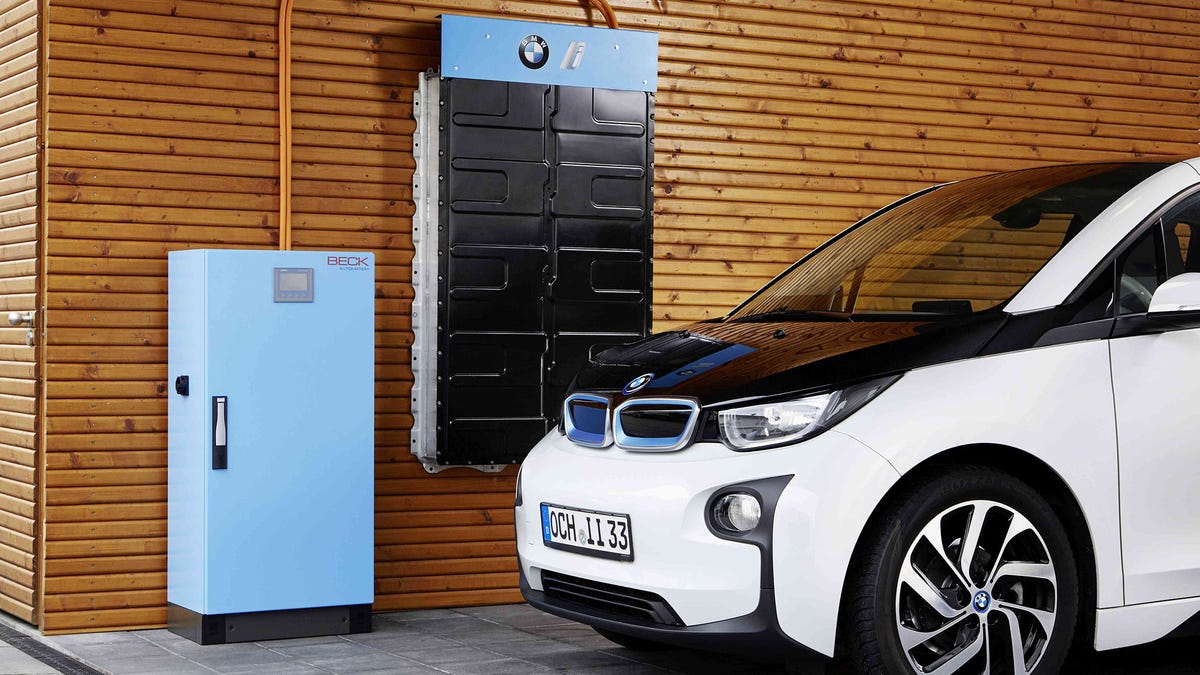Like Powerwall, but uglier: BMW rolls out home-storage battery solution
Debuting at the Electric Vehicle Symposium and Exhibition 29, its wall-mounted storage system utilizes a high-voltage EV battery plucked straight from the i3.

Stationary in-house batteries will soon be all the rage. Tesla announced its Powerwall, and Nissan followed in its footsteps with xStorage. Now, BMW's getting in on the action with its currently unnamed energy storage solution. While they may all sound the same, BMW's offering has a trick up its sleeve.
Whereas xStorage and Powerwall have tidy looking batteries that are built for that specific purpose, BMW's system is a bit more utilitarian. Instead of using a proprietary battery, it relies on the high-voltage battery plucked right out of the i3 electric city car. It can also use "Second Life" batteries, which are batteries that are retired from automotive use.
Incorporating technology from Beck Automation, BMW's storage system will provide off-grid power for appliances and other electrical devices. It should be able to supply about a day's charge at a time, as the battery's capacity should be between 22 kWh and 33 kWh, while typical daily household energy use is somewhere around 15 to 30 kWh, according to BMW.
BMW touts the system's "plug and play" nature as the key asset that separates it from the competition. Sure, it's not exactly the most elegant solution, but it's better than just throwing your hands up in frustration when you realize your i3's expired battery is still useful, just not in a vehicle.
But if you can accept the upfront cost of the battery, or are willing to repurpose your spent i3 battery, you could stand to save a considerable chunk of change. By charging the battery during off-peak hours and using that cheaper electricity in place of the grid, the savings will add up, albeit slowly.

